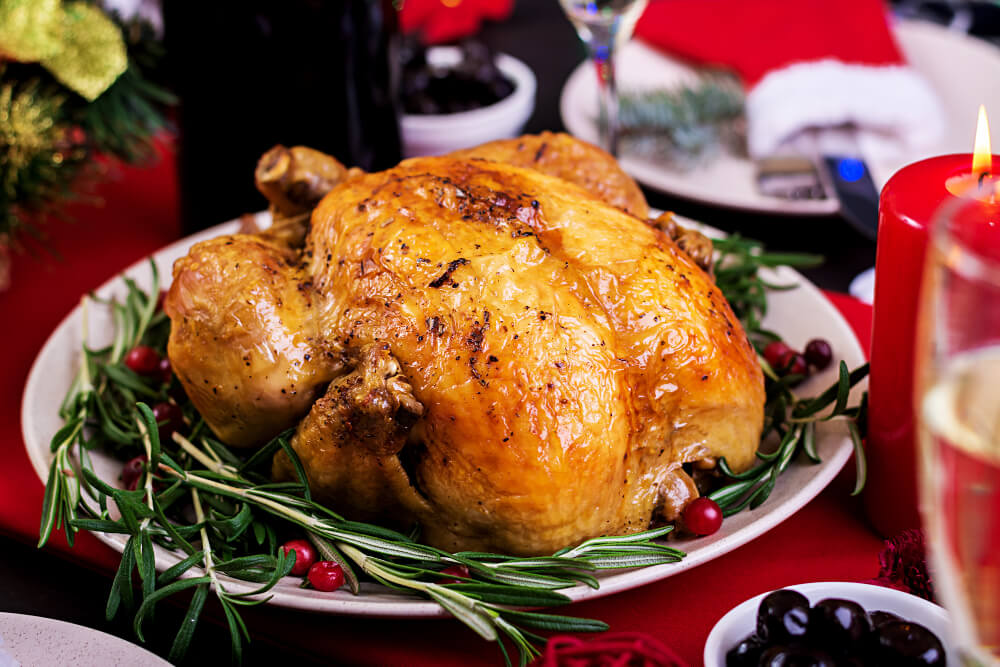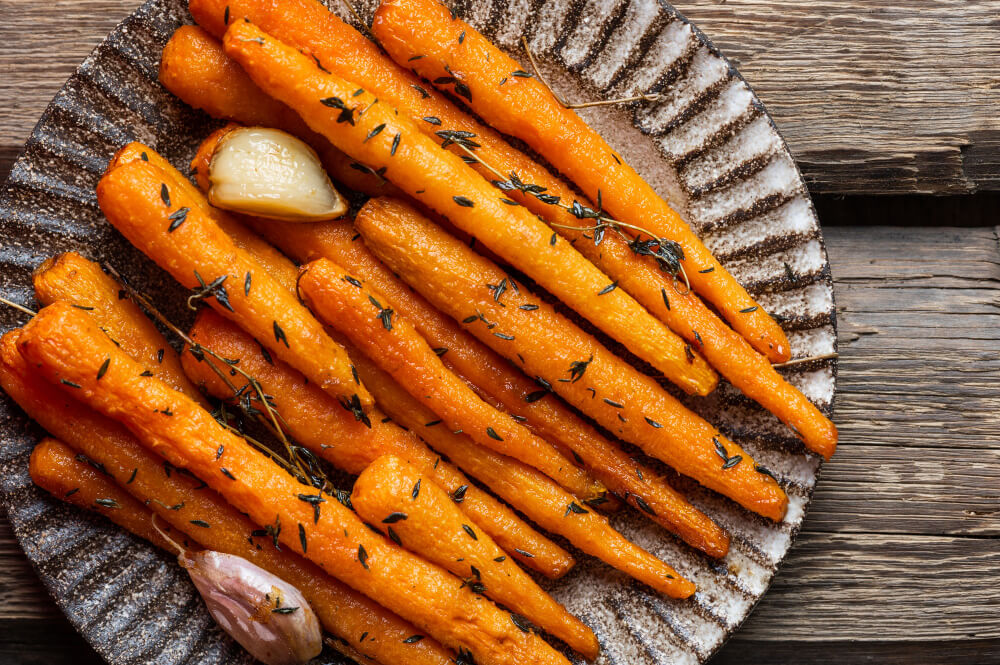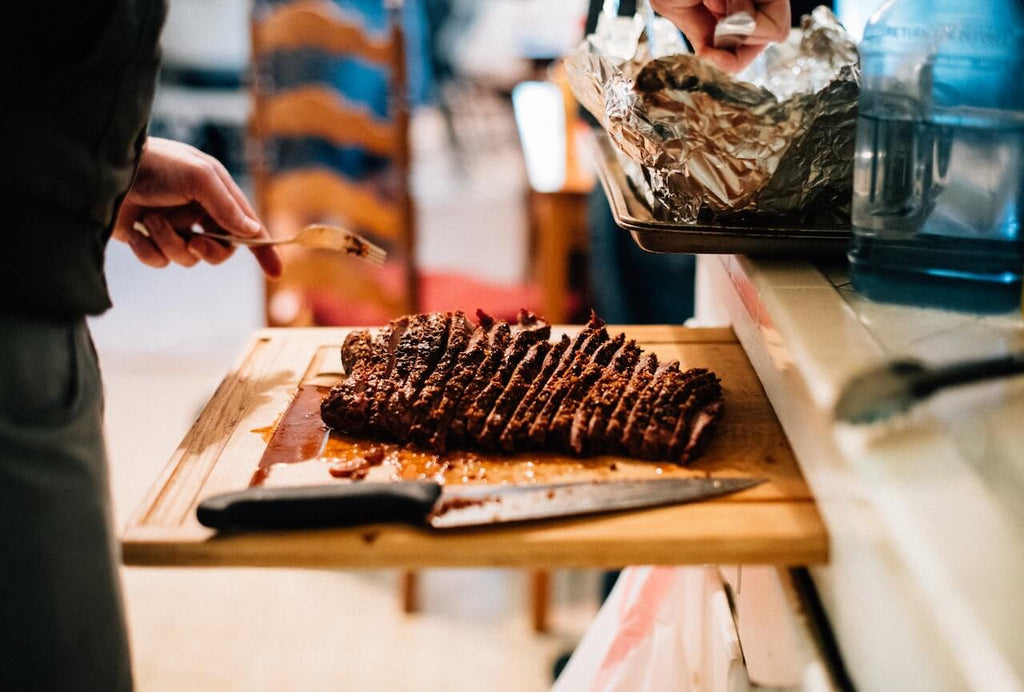
When it comes to BBQ, nothing quite beats the smoky, tender deliciousness of a well-prepared brisket. With its versatility and rich flavor, brisket is a favorite among both backyard enthusiasts and professional pitmasters. However, creating the perfect chopped brisket isn't just about throwing some meat in the smoker and slathering it with BBQ sauce. It takes time, patience, and skill to ensure that your smoked brisket is juicy, tender, and packed with flavor.
In this guide, we'll cover the proper way to make chopped brisket and share a quick, scrumptious brisket sandwich recipe that'll make your taste buds sing. So, let's fire up the smoker, slice into the details, and discover the secrets to chopped brisket mastery.
How to Choose the Right Cut of Meat
When it comes to cooking a delicious chopped brisket, choosing the right cut is essential. There are two main cuts you'll need to consider when purchasing a whole brisket: the brisket point and the flat cut.
- Point vs. flat cut:The point cut is thicker and has more fat content, making it the ideal choice for chopped brisket. This higher fat content helps to keep the meat moist and flavorful during the cooking process. The flat cut, on the other hand, is leaner and works best for slicing. Knowing the difference between these two cuts will ensure you select the perfect cut for your desired dish.
- Marbling and grade:Marbling is the distribution of fat within the meat, which is essential for a juicy and tender brisket. Look for a brisket with abundant marbling, as this will enhance the flavor and texture. When it comes to grading, the USDA has three main grades for beef: Prime, Choice, and Select. Prime grade boasts the highest quality with abundant marbling, followed by Choice with slightly less marbling, and Select, which is leaner with less marbling. While cooking a Select grade brisket is possible, it may require more attention during the cooking process to ensure tenderness.
Importance of quality and freshness
Starting with fresh, high-quality meat is crucial for achieving the best results when you cook brisket. An aged brisket will be more tender and flavorful due to the enzymatic breakdown of proteins over time. When inspecting a brisket, look for a deep red color, a firm texture, and minimal surface moisture. Vacuum-packed or "cryovac" briskets are a great option, as they can be stored in the fridge for up to 1.5 months, allowing for aging while maintaining freshness.
Tips for sourcing from local butchers and farmers
Purchasing your brisket from a local butcher or farmer has many benefits, including supporting local businesses, ensuring higher quality and freshness, and the opportunity to build relationships with suppliers who can provide valuable advice and expertise.
- Finding local butchers and farmers: To find a local butcher or farmer, you can search online, visit farmers' markets, or ask for recommendations from friends or fellow BBQ enthusiasts. When you find a potential supplier, inquire about the source of the meat and whether it's grass-fed or grain-finished, as this can impact the flavor and quality of the brisket.
- Selecting a packer brisket:When possible, opt for a "packer" brisket, which includes both the point and flat cuts. This allows you to separate the two cuts and utilize each for different recipes. A packer brisket will typically have a more even cooking time and provide more versatility in your dishes.
Preparing the Brisket

To achieve the perfect chopped brisket, it is crucial to trim the fat cap properly. The fat cap plays an essential role in maintaining the moisture and flavor of the beef brisket, but too much fat can be detrimental to the final result.
Why it's essential to trim the fat for chopped brisket?
Trimming the fat cap is important for several reasons:
- It allows the smoke to penetrate the meat more effectively, resulting in a better smoke ring and smoky flavor.
- Removing excess fat prevents the final dish from being overly greasy or fatty, improving the overall mouthfeel and taste.
- A well-trimmed brisket will cook more evenly, ensuring consistent tenderness throughout the meat.
How much fat to leave on?
Using a sharp knife, trim the fat cap so that a consistent layer of fat, about 1/4 inch thick, remains on the surface of the brisket. This amount of fat provides a balance between preserving moisture and flavor and allowing for proper smoke penetration.
Now it's time to season the brisket!
After trimming the fat cap, the next step in preparing your brisket is seasoning. A well-seasoned brisket will have a delicious crust, or "bark," that adds depth and complexity to the final dish.
A simple yet flavorful dry rub can elevate your beef brisket to new heights. Here's a basic recipe to get you started:
- 1/4 cup kosher salt
- 1/4 cup freshly ground black pepper
- 2 tablespoons paprika
- 2 tablespoons brown sugar
- 1 tablespoon garlic powder
- 1 tablespoon onion powder
Combine all the ingredients in a bowl and mix well. Generously apply the dry rub to the entire surface of the brisket, making sure to cover all sides. Allow the brisket to rest for at least 30 minutes to let the rub penetrate the meat, or for even better results, let it rest overnight in the refrigerator.
Feel free to customize your dry rub to suit your taste preferences. Experiment with different spices, herbs, and flavors to create your signature rub. Some popular additions include cayenne pepper for heat, dried herbs such as thyme or oregano for an earthy note, or even ground coffee for a unique, bold flavor.
Marinating for optimal flavor and tenderness
While not always necessary, marinating your brisket can enhance its flavor and tenderness. A marinade typically includes acidic components, such as citrus juice or vinegar, which help to break down the meat's connective tissues, resulting in a more tender final product.
To create a simple marinade for your beef brisket, combine the following ingredients:
- 1 cup beef broth
- 1/2 cup apple cider vinegar
- 1/4 cup Worcestershire sauce
- 1/4 cup soy sauce
- 1/4 cup olive oil
- Juice of one lemon
- 4 cloves of garlic, minced
- 1 tablespoon of your dry rub mixture
Place your brisket in a large resealable plastic bag or a non-reactive container and pour the marinade over the meat, ensuring it's fully submerged. Seal the bag or cover the container and refrigerate for at least 4 hours, or ideally overnight, to allow the marinade to work its magic. Be sure to flip the brisket occasionally to ensure even marination and flavor absorption. Once the marinating process is complete, remove the brisket from the marinade and pat it dry with paper towels before applying another layer of dry rub.
Marinating your beef brisket not only enhances its flavor but can also contribute to a more tender and juicy final product. However, it is important to remember that the marinating process should complement the natural flavors of the brisket and not overpower them. As such, be mindful of the ingredients you use and the marinating time to achieve the perfect balance.
After completing the steps of trimming, seasoning, and marinating, your brisket is now ready to be cooked. Whether you choose to smoke, grill, or braise your brisket, the time and effort you've put into preparing the meat will undoubtedly pay off in the form of a mouth-watering, tender, and flavorful chopped brisket.
Cooking the Brisket
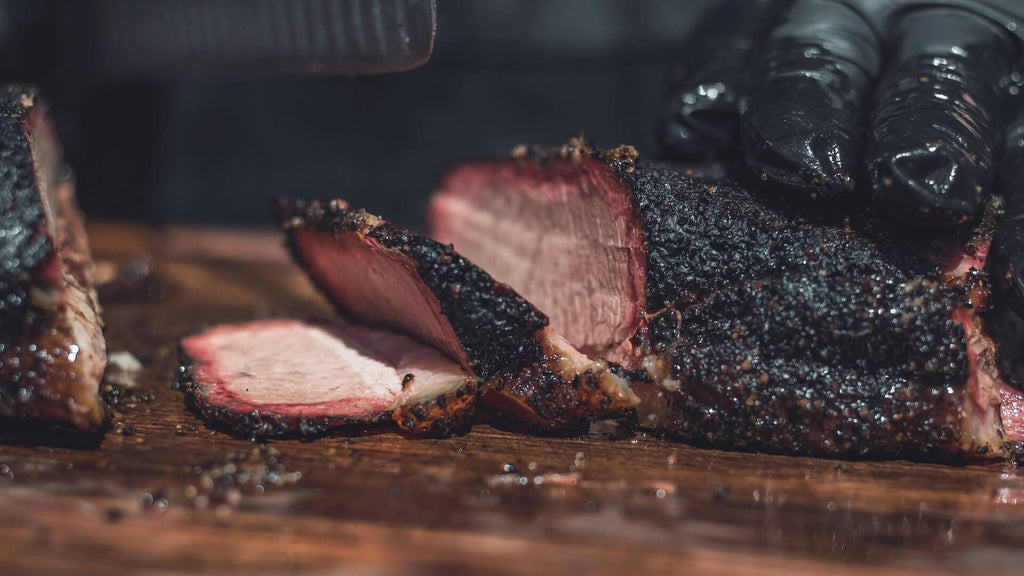
Low and slow cooking method
The key to achieving tender and flavorful chopped brisket lies in the "low and slow" cooking method. This approach allows the meat's connective tissues to break down gradually, resulting in a moist and tender final product.
For the low and slow method, aim to maintain a consistent cooking temperature between 225°F and 250°F. Cooking time will vary depending on the size and thickness of your brisket, but expect to cook the meat for approximately 1 to 1.5 hours per pound.
While a smoker is the traditional choice for cooking brisket, an oven can also yield excellent results. The primary difference between the two methods lies in the smoky flavor imparted by the smoker. If you don't have access to a smoker, you can still achieve a delicious brisket using your oven or even a slow cooker. Simply adjust the cooking time and temperature as needed to maintain the low and slow approach.
Monitoring internal temperature
Monitoring the internal temperature of your brisket throughout the cooking process is crucial to ensure tenderness and avoid overcooking.
A reliable meat thermometer is an essential tool when cooking brisket. It allows you to accurately track the internal temperature of the meat and ensure that it reaches the desired level of doneness. Insert the thermometer into the thickest part of the brisket, avoiding fat and bone, to get an accurate reading.
For a tender and juicy chopped brisket, aim for an internal temperature of around 200°F to 205°F. At this temperature, the connective tissues have had sufficient time to break down, resulting in a melt-in-your-mouth texture. Be patient during the cooking process, as rushing or increasing the temperature can lead to a dry and tough brisket.
Resting the brisket
Once the brisket has reached the desired internal temperature, it's crucial to let it rest before you chop the brisket and serve.
Resting the brisket allows the juices to redistribute throughout the meat, ensuring that each bite is moist and flavorful. Cutting into the meat immediately after cooking can cause the juices to spill out onto the cutting board, resulting in a dryer final product.
For optimal results, let the brisket rest for at least 30 minutes to an hour, wrapped in aluminum foil or butcher paper and placed in an insulated cooler or an oven set to "warm." This resting period will help to lock in the moisture and make slicing or chopping the brisket easier.
Once the brisket has rested, transfer it to a cutting board and use a sharp knife to separate the point and flat cuts if you're working with a whole brisket. Slice or chop the brisket as desired, and don't forget to save those delicious burnt ends for an extra special treat. Whether you're enjoying your brisket as a main course or using it in a quick brisket sandwich recipe, the time and effort put into preparing and cooking the meat will undoubtedly shine through in every bite.
Chopping the Brisket
Transforming your perfectly cooked brisket into chopped brisket requires some attention to detail and technique. By following best practices for chopping and focusing on achieving the ideal texture, you can create a delicious and satisfying dish.
Best practices for chopping brisket
Properly chopping your brisket is key to maintaining its tenderness and ensuring a pleasurable eating experience.
- Knife selection: When it comes to slicing or chopping your brisket, using the right knife is essential. A sharp, long, and slightly flexible knife, such as a slicing knife or a carving knife, is ideal for the task. The sharp blade allows you to make clean cuts without tearing the meat, while the length and flexibility of the knife help you achieve even slices or chopped pieces.
- Cutting against the grain:To ensure tender and easy-to-chew bites, it is crucial to cut your brisket against the grain. This means cutting perpendicular to the muscle fibers, effectively shortening them and making the meat more tender. To identify the direction of the grain, look for the lines or fibers running through the meat and position your knife accordingly. Cutting against the grain applies to both sliced beef brisket and chopped brisket.
Achieving the perfect texture
The ultimate goal when chopping brisket is to maintain the meat's moisture and tenderness.
How to avoid drying out the meat
To prevent your chopped briskets from drying out, follow these tips:
- Allow the brisket to rest before chopping: As mentioned earlier, resting the meat helps retain its moisture. Cutting into the brisket too soon may cause the juices to escape, resulting in drier meat.
- Work quickly but carefully: Once you begin chopping the brisket, try to work efficiently to minimize the meat's exposure to air, which can cause it to dry out. However, be careful not to compromise on technique and precision.
- Store chopped meat in its juices: If you're not serving the chopped brisket immediately, store it in a covered container along with some of its juices to keep the meat moist and flavorful.
Tips for juicy, tender chopped brisket
Here are some additional tips to help you achieve the perfect texture in your chopped brisket:
- Chop the brisket into bite-sized pieces: This makes it easier to eat and helps maintain the meat's tenderness.
- Combine chopped and sliced brisket: If you're working with a whole cut of brisket, consider combining chopped meat from the point cut with sliced meat from the flat cut. This creates a contrast in textures and takes advantage of both the juiciness of the point and the tenderness of the flat.
- Serve with sauce: A delicious BBQ sauce or au jus can enhance the flavor and moisture of the chopped brisket, further elevating the dish. Feel free to experiment with different sauces to find the perfect match for your personal taste.
To sum up, properly chopping a cooked brisket requires attention to detail and technique. By using the right knife, cutting against the grain, and focusing on maintaining the meat's moisture and tenderness, you can create a mouthwatering chopped brisket that is sure to impress. Whether served on its own or as part of a brisket sandwich, your chopped brisket will be a delicious and satisfying treat.
Quick Brisket Sandwich Recipe
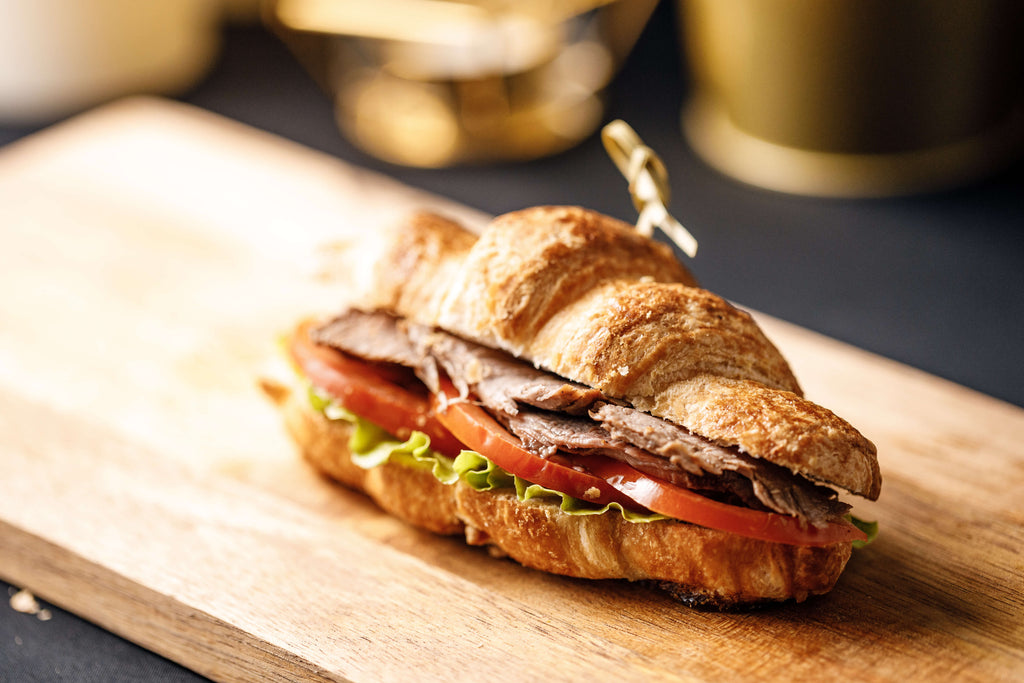
Now for the moment you've been waiting for: the quick brisket sandwich recipe! This recipe is perfect for using leftover brisket or transforming freshly chopped beef brisket into a delicious and satisfying meal. The great thing about this brisket recipe is that it's easily customizable to suit your taste preferences and dietary needs.
To create mouthwatering chopped brisket sandwiches, you'll need the following ingredients:
- Chopped brisket:You can use leftovers from a previous cook, or prepare a fresh brisket specifically for this purpose. Remember, smoking a brisket is best when cooked low and slow to achieve that tender, juicy texture.
- Sandwich bread or buns: Choose your favorite bread or bun, such as a soft brioche, a crusty ciabatta, or a classic hamburger bun.
- Toppings and condiments:The sky's the limit when it comes to toppings and condiments for your brisket sandwich. Consider options like pickles, jalapenos, coleslaw, caramelized onions, or cheese. For condiments, barbecue sauce is a classic choice, but feel free to experiment with other sauces like a tangy mustard or a creamy horseradish sauce.
Assembly instructions
To assemble your chopped brisket sandwiches, follow these simple steps:
- If using leftover brisket, gently reheat it in a saucepan or microwave, adding a bit of barbecue sauce or pan juices to keep the meat moist. Freshly chopped brisket takes on flavors well and can be used as is.
- Lightly toast your sandwich bread or buns, if desired. This adds texture and helps prevent the bread from becoming soggy.
- Spread a layer of your chosen condiment on the bottom half of the bread or bun.
- Pile a generous amount of chopped brisket onto the bottom half, making sure to distribute the meat evenly.
- Add your chosen toppings, layering them as desired.
- Finish with the top half of the bread or bun, and press down gently to help the sandwich hold together.
Serving suggestions and variations
Here are some ideas for serving your chopped brisket sandwiches and ways to vary the recipe:
- Serve with a side of coleslaw, potato salad, or baked beans for a true BBQ experience.
- For a spicy twist, add sliced jalapenos or a spicy barbecue sauce to this chopped brisket sandwich recipe.
- Create a Tex-Mex version by adding avocado, pico de gallo, and pepper jack cheese to your sandwich.
- For a lighter option, use a lettuce wrap instead of bread or buns, and top the chopped brisket with a tangy slaw.
- Experiment with different types of bread or buns, such as a pretzel roll, a sourdough roll, or a whole-grain bread.
Whether you're using leftover or freshly prepared brisket, these quick and easy chopped beef sandwiches are sure to be a hit. With endless possibilities for toppings and condiments, you can create a unique and delicious meal that will have everyone asking for seconds. So gather your ingredients and get ready to enjoy a mouthwatering, satisfying brisket sandwich experience.
Conclusion
In conclusion, the debate between sliced vs chopped brisket ultimately comes down to personal preference and the desired texture for your dish. Both BBQ brisket styles offer unique flavors and mouthfeel, with chopped brisket providing a more rustic, hearty experience. Understanding the differences between chopped vs. sliced brisket allows you to create a dish that caters to your tastes and the preferences of your guests. Regardless of your choice, brisket can be cooked in a variety of ways, from smoking low and slow to braising in a slow cooker. The key is to select the right cut, prepare it properly, and enjoy the delicious results that come from your efforts.
Related Articles
- How To Serve Brisket at a Party - Board and Side Dishes
- Brisket Deckle Guide: What Is It and Some Recipes To Try
- How To Make Brisket Burnt Ends?
- How To Make Beef Tallow From Your Brisket’s Extra Fat
- What Is the Best Cutting Board for Brisket?
- Costco Brisket - How Good Is It?
- How Long to Smoke Brisket at 225?
- Tri Tip vs Brisket: What Is the Difference?
- What To Do With Brisket Trimmings? Don't Just Throw Them Away
- Best Brisket Knife - List of Best Knives for Slicing Brisket
Related Products You Might Like
If you're looking to elevate your brisket preparation experience, consider investing in high-quality related products. A wooden cutting board is an essential tool for slicing and chopping your cooked brisket.
Mevell offers premium wooden cutting boards designed to protect your knives, provide a stable surface for cutting, and add a touch of elegance to your kitchen. These boards are not only functional but also visually appealing, making them a perfect addition to any brisket lover's culinary arsenal.
Explore Mevell's range of wooden cutting boards to find the ideal match for your brisket preparation needs.


